How to plan a vegetable garden
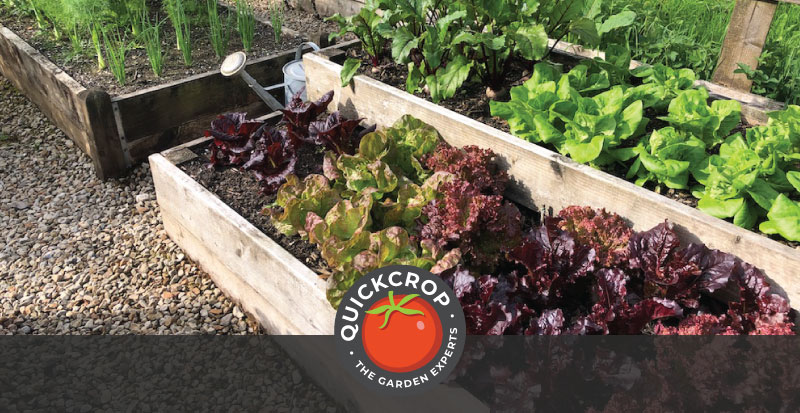
A new year brings with it the temptation to try something new in the garden, overhaul your growing space or simply fine-tune the way that you do things. Garden planning is something you can do at any stage of your journey, whether you're an absolute beginner to vegetable gardening or a seasoned grower who wants to experiment with a different approach.
I have had a few emails over the last couple of weeks looking for advice on starting a vegetable garden from scratch, so I thought we would have a good look at it today. I hope that some of it will be helpful. How detailed you want your plan to be is up to you, but personally I think attention to detail goes a long way in the garden. Drawing up a good plan will make your year's growing so much easier: it will help you be more efficient with plant feeds etc and get the most from your space using succession sowing and follow on crops.
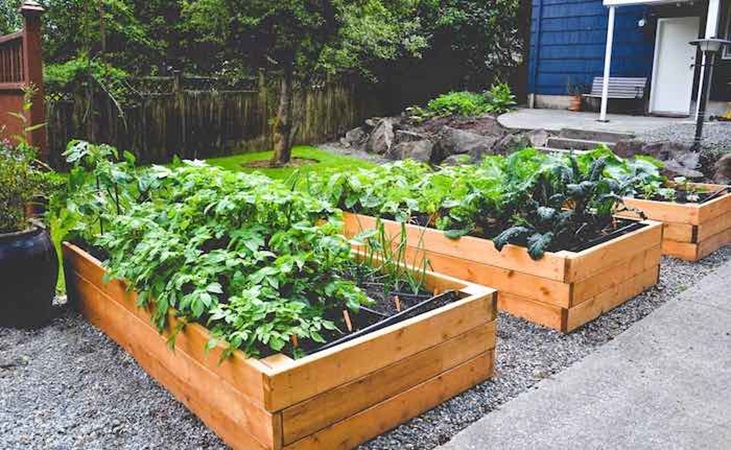
Tips on starting a new garden
Location & Aspect
Your vegetable garden should ideally be in full sun, yet sheltered from strong winds. Most vegetables will need at least 6 hours sun in a day to do well, with a full day of sun being preferable. If possible you should avoid shade cast by buildings or trees (though I accept this may not be that easy in urban gardens).
In the Northern hemisphere try to place tall growing plants at the north end of your beds with lower growing crops in the front, so they can all take advantage of the sun. Crops like lettuce, chard, spinach and beetroot will tolerate semi shade so can be planted in the shadow of larger crops if necessary.
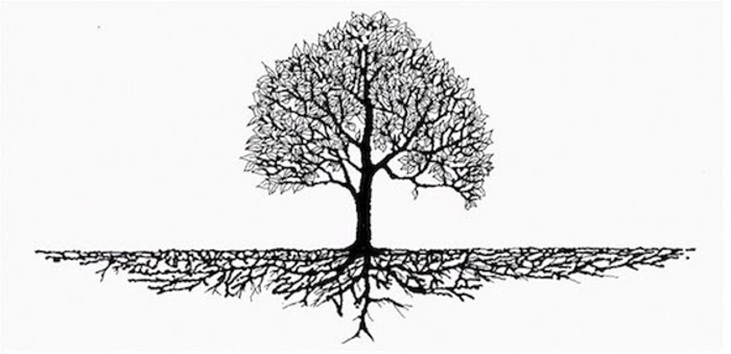
You should also take into account the spread of tree roots: avoid placing beds within their catchment area. As a rule of thumb, tree roots will spread out the same distance from the trunk as the height of the tree - so probably a lot further than you think. Tree roots sneak into the well-fed soil of your vegetable beds, and will take both moisture and nutrients from your crops.
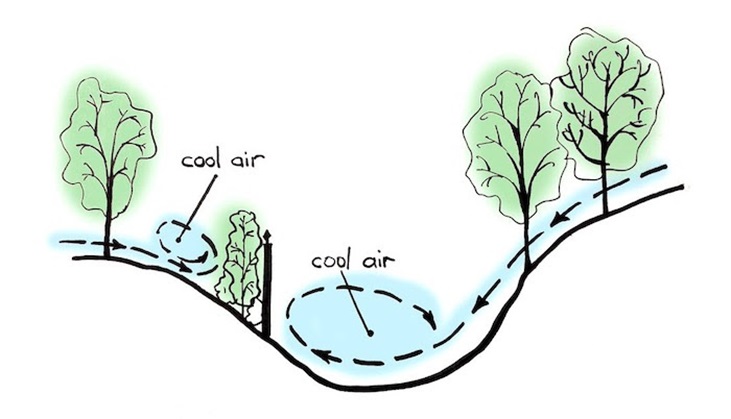
Frost pockets
You should also try to avoid frost pockets, which are areas where cold air collects. This can lead to very hard frosts on cold nights. On cold mornings keep an eye out for patches of mist that linger in hollows: this will indicate a possible problem area.
Cold air also flows downhill like water and will pool if it meets an obstruction. If frost is an issue at a point in a fence or hedge, opening a gap can allow it to drain away.

Heavy Duty Windbreak Netting Rolls
View Product
Shelter
Shelter from winds is often underestimated, but makes a huge difference in the yield of your vegetables. Research has shown that even protection from light winds can increase yield by up to 30%. In windy gardens a windbreak is absolutely essential.
It is better to disrupt the flow of wind rather than stop it. Windbreaks should be semi permeable and allow some air through, because solid walls or fences can create damaging turbulence on the lee side of the structure. I would also make the point that although hedges make attractive windbreaks, don’t plant too close to them as (like trees) their roots will compete with your crop for moisture and nutrients.
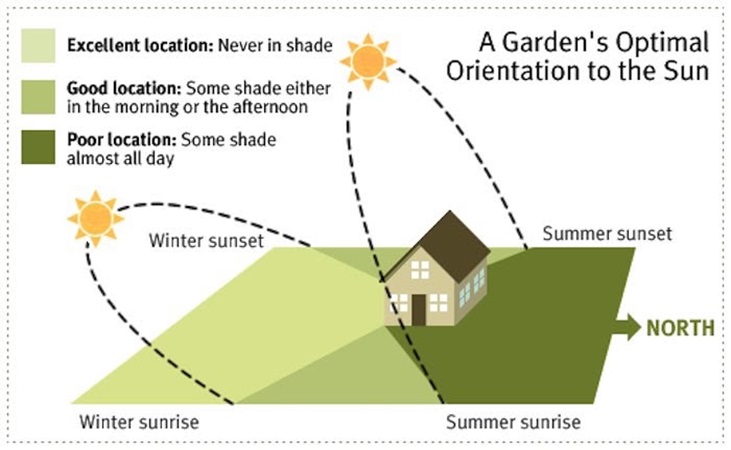
North South or East West?
In the Northern hemisphere a south-facing garden is preferable, as it will get more exposure to the sun. A north-facing garden is not impossible to cultivate, but the range of crops you can grow will be limited to shade-tolerant plants.
As regards which direction you should place your beds, it is best to grow tall vegetable crops like peas, beans or tall fruit (like raspberries or currants) orientated North-South. This is so that the sun is able reach each side of the plant as it arcs across the sky.

Easy To Assemble Raised Vegetable Beds 180cm x 120cm
View ProductAs we’ve said, a south-facing garden gets more sun, but it can also help if you angle your beds slightly towards the sun like the top of a cold frame. This is not really relevant in Southerly gardens but in Northern gardens like mine (I’m at a latitude of 54˚N) it has been shown to be a benefit.
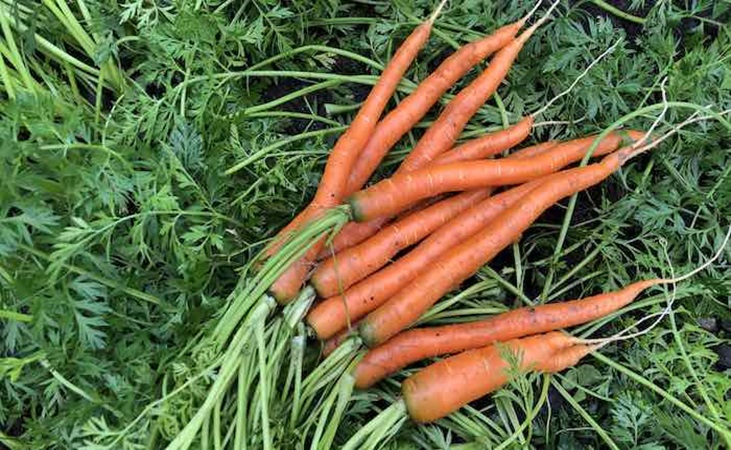
How much space do you need?
To a certain extent, planning the size of your garden is often dictated by the amount of space you have available. As a rule of thumb, to feed a family of four with seasonal vegetables you will need a garden of 200 square meters, which takes up a space of 20 x 10 meters.
If you are happy to buy in your potatoes, cabbage or other crops that need a lot of space you will need a much smaller space, about half that size. Bear in mind that in one square meter you can grow only 1 large summer cabbage but can grow 40 carrots in the same space. For this reason it makes sense to think carefully about the crops you want to grow before you start. By working out the space required for each, you can get a good idea of the size of garden you will need.
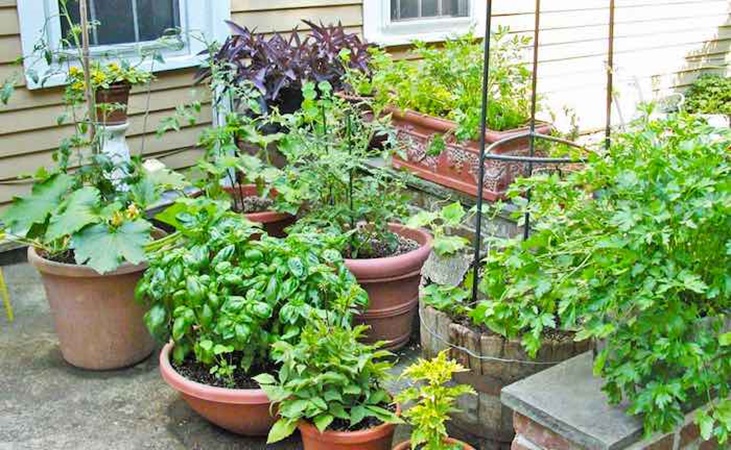
What to grow in?
For the most part vegetables will need a soil or compost to grow in. What you choose to hold this soil or compost in will depend on the space you have available and the crops you want to grow, but we can split up our options into 3 main groups; container growing, raised bed growing or growing in open ground.

Carrot Patio Planter - 2 Pack
View Product
Container growing
Container growing refers to using containers of various sizes to grow your crops. It is well suited to smaller gardens or balconies where space is at a premium. Almost anything can be used as a planter, provided there are drainage holes at the bottom. You can use purpose made pots or troughs, or re-purpose other containers like old crates, sacks or food tins.
The only thing I would advise caution on is using materials which may leech chemicals as they break down. Check the recycling numbers on plastic containers; any with the number 1,2,4 or 5 should be OK but avoid 3, 6 and 7 as these are more unstable and may contaminate your soil and your plants.
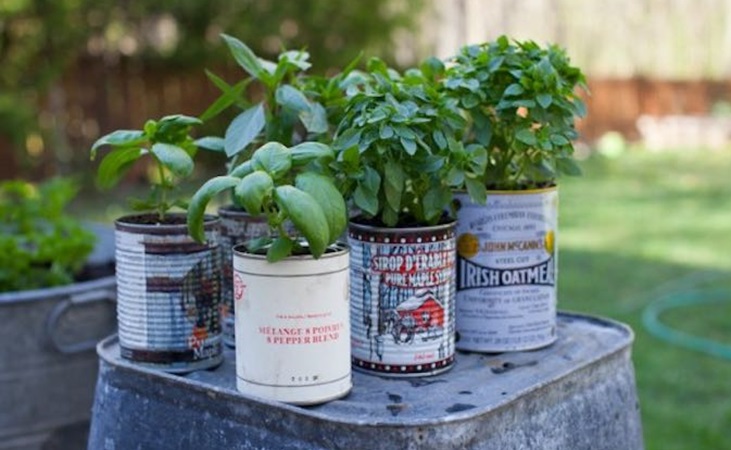
The size of the container you use will depend on the amount of root space needed for the plant you are growing. Salad crops like this lettuce, rocket, or coriander will be fine in small pots like these old bean cans, but for larger plants you will need a width and depth of at least 45cm wide and deep. Bear in mind that the smaller the container is, the faster it will dry out and the more you will need to water.
Compost
Unlike plants grown in open soil, your container-grown vegetables will need to get all their nutrients from whatever mix you put inside the pot so it’s important to get it right.
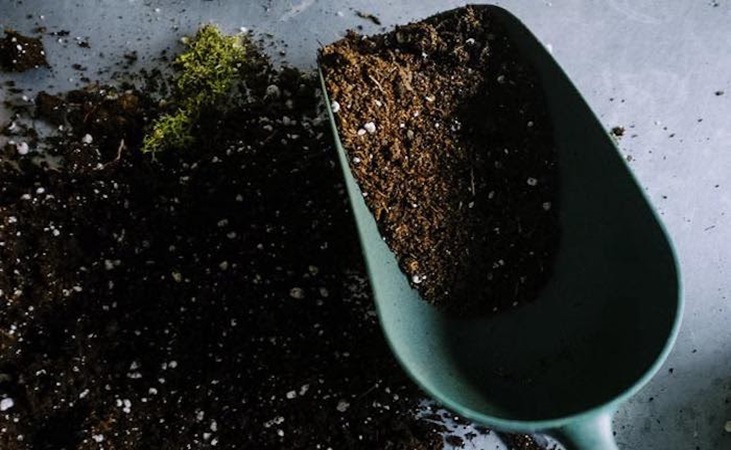
Multipurpose compost on its own will tend to dry out too quickly, while soil can become compacted and waterlogged, strangling or drowning plant roots. Unlike open soil which is usually deep enough for water to drain away from the root zone, in pots water tends to accumulate around around the base before draining away.
My recommendation is a free-draining mix of good quality weed-free topsoil, peat-free compost, coarse sand and rock dust. The mix is one part soil, I part compost, 1 part coarse builders sand and 0.2 parts of rock dust. The soil and compost provide nutrients, the sand assists drainage and the rock dust adds the minerals that would normally be present in deep soil.
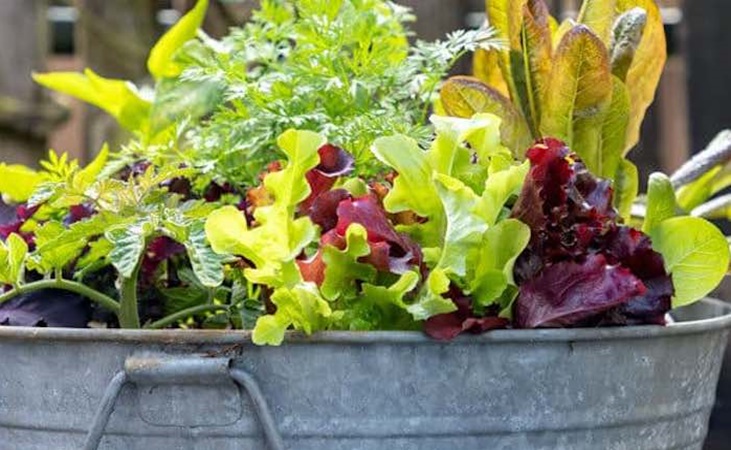
What to grow in containers?
You can grow a wide range of vegetable crops in a containers, but I would avoid large crops that only give a single harvest. You would need a full 45cm pot to grow a cabbage for example, which will take a full summer to grow for just one cabbage. You are better off with smaller plants or ones that will give you multiple pickings over a long period.
More compact crops suited to container gardening include salads, spinach, baby carrots, beetroot, peas, beans, baby tomatoes, courgettes or herbs.
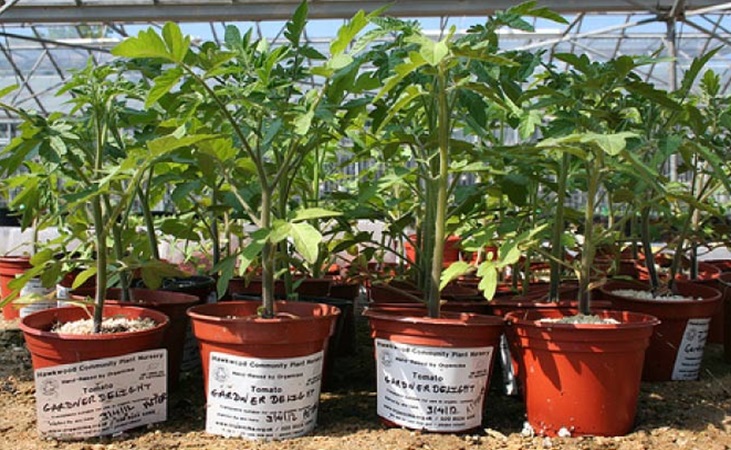
Pro’s & Cons of Container Gardening
Pros
- Quick and easy to give growing a go.
- Low cost entry level.
- Ideal for small spaces.
Cons
- Restricted choice of crops.
- Requires a lot of effort watering and feeding.
- More difficult to grow organically.
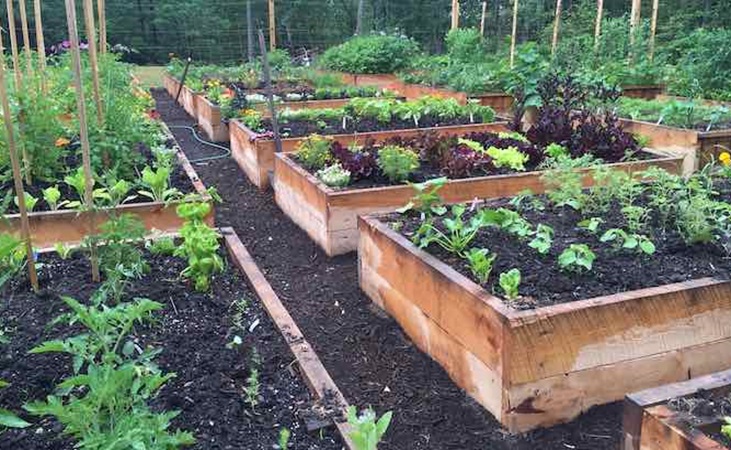
Raised Beds
Raised beds are the next step up from container growing. They are essentially large containers themselves but are able to hold much larger volumes of soil. Raised beds can be built to any size or height, and are most commonly made from timber planks like the ones in my garden. I will be honest and say I am slightly biased here as we sell raised bed kits, but I genuinely believe they are one of the best ways to grow vegetables.
I like them because they keep the garden organised and easy to look after, especially with paths separating them as we have here. The beds are very easy to construct either from a kit (from Quickcrop of course) or you can source timber and make them yourself.
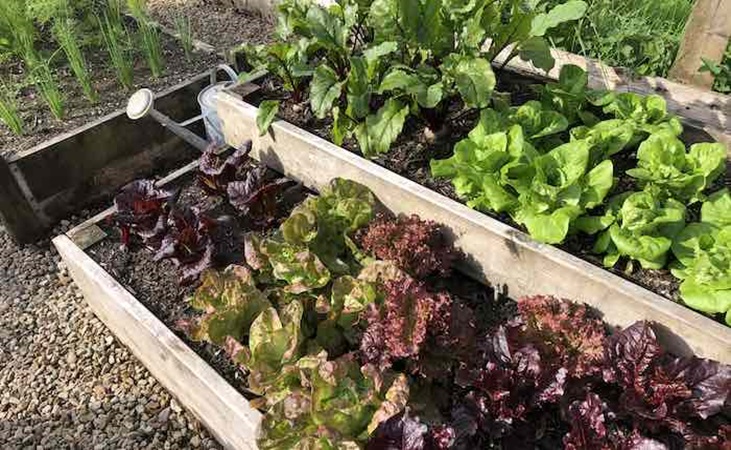
Advantages of growing in Raised Beds
Apart from making the place easier to manage, raised beds have a number of other advantages. If you have a wet site like I do, the raised beds raise the root zone above wet ground - which keeps the soil and the roots from becoming waterlogged. If you don’t have very good soil or don’t have any soil at all it doesn’t matter: because the raised beds are simply built on top, you can fill them with a good soil mix.
Beds will also warm quicker in spring due to their sides being exposed to the sun, so that will allow you to get growing slightly earlier.
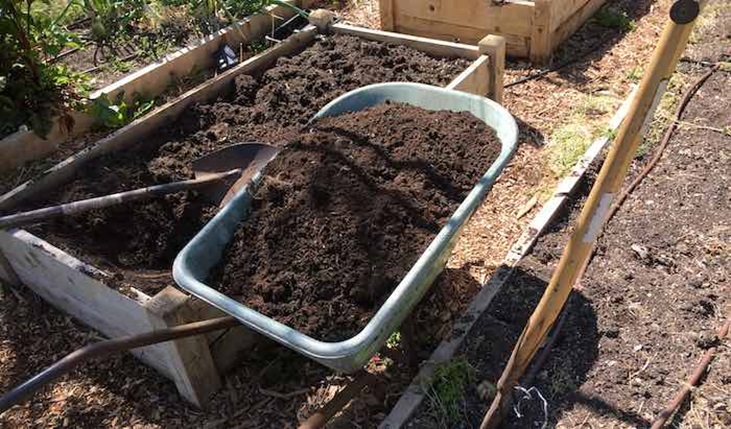
Soil for Raised Beds
Because of the depth of good soil to work in, raised beds can be also cropped more intensively. Instead of the traditional rows of vegetables with wide spaces in between, we can use equidistant spacing where foliage crowds out any weeds. This means that they are less work to look after, and you get more from a small space.
There are a number of options for building your raised bed soil, which is often dictated by what you can get your hands on; but the trick to intensive cropping is making the soil as fertile as possible. I would always recommend the ‘no dig’ method of adding organic matter in the form of compost or manure to the soil surface. This organic method focuses on feeding the soil rather than feeding the plant directly and it really is key to a healthy garden.
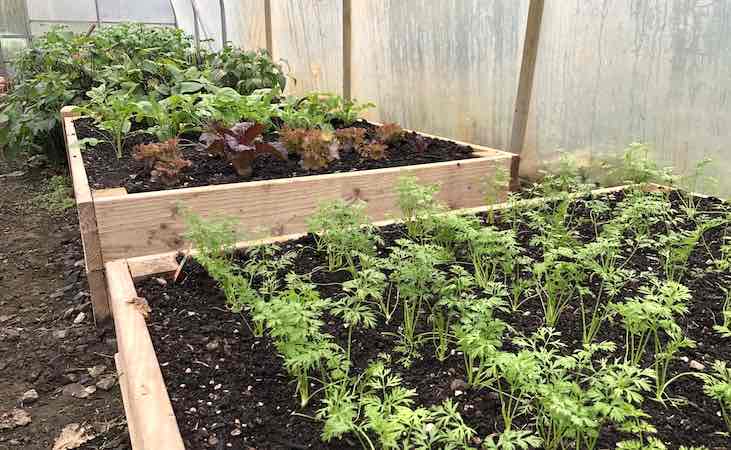
What to Grow
As regards what you can grow in raised beds, you will only be constrained by how much growing space you have. The fact that raised beds drain well also means you have more options for late season and overwintering vegetables.
As with container growing, if you only have a couple of beds it’s best to stick to more compact crops - but if you have a larger raised bed garden you can include the big stuff like potatoes, brussels sprouts, cauliflower or cabbage.

Premier 22.5cm FSC Timber Raised Garden Beds
View Product
Pro’s & Cons of Raised Bed Gardening
Pros
- Creates a neat and easy to manage garden
- Overcomes poor soil or a damp site
- Less trouble from encroaching weeds
- Enables more intensive cropping
- Extends the growing season
Cons
- Will need more watering in hot summers
- You will need to source soil to fill the beds
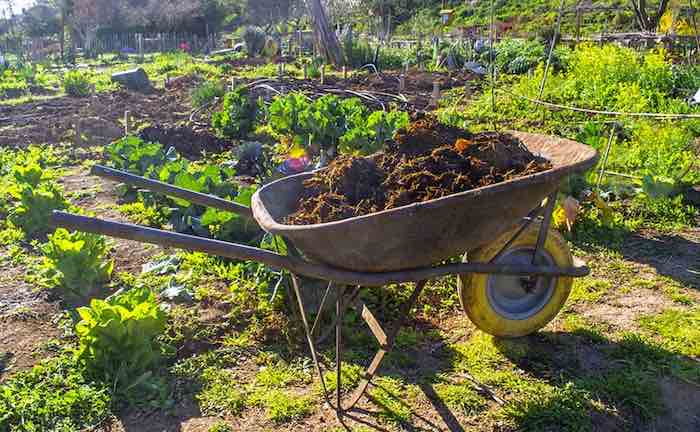
Growing in open ground
If you are fortunate enough to have good quality soil in your garden, growing in open ground may be an option for you. It is important to get rid of any deep rooted perennial weeds or invasive grasses like scutch grass before you start. The best method - although it takes a full season to do properly - is to block the light from the weeds using a sheet of black plastic, or by using sheets of cardboard covered by a thick compost mulch. If using black plastic, it will need to be down for 12 months before planting. On the other hand cardboard covered beds can be used straight away - provided the compost mulch on top is thick enough.
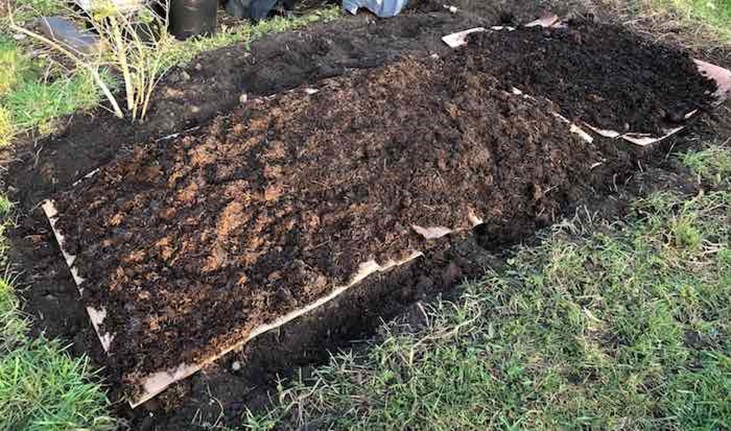
I would still recommend using relatively narrow beds with paths in between to make it easy to manage crops. Paths covered in wood chip mulch to keep weeds down are a good idea, as they provide nutrients for adjacent plant roots as the mulch breaks down.
By following the 'No Dig' method of adding compost or manure to the soil surface, you will find your beds also become raised over time as the fertile material builds up. Your garden beds will essentially become raised beds without sides. In my garden above, I have added timber boards to keep the soil in by hammering pegs into the ground and slotting the timber in behind, a process that takes 10 minutes and helps keep my paths tidy.
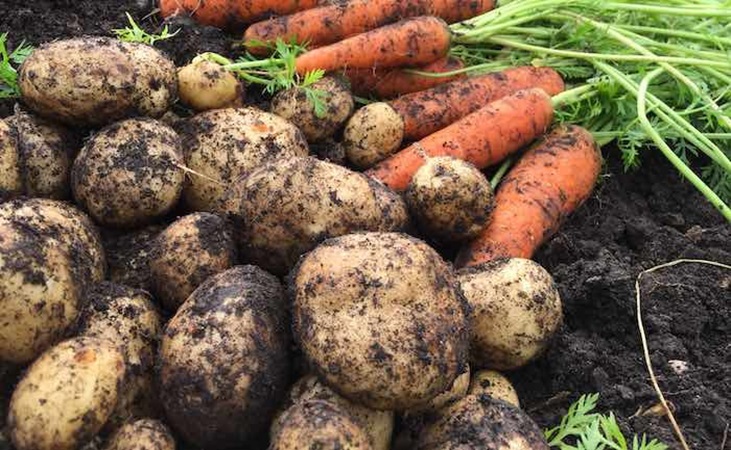
What to Grow
As regards what you can grow in open ground, it will depend on your your soil type and climate - but your options will be the same as with raised beds provided, as we said, the soil is good and well-drained.
Pro’s & Cons of Growing in Open Ground
Pros
- No bed building required
- Most cost effective
Cons
- More work to look after
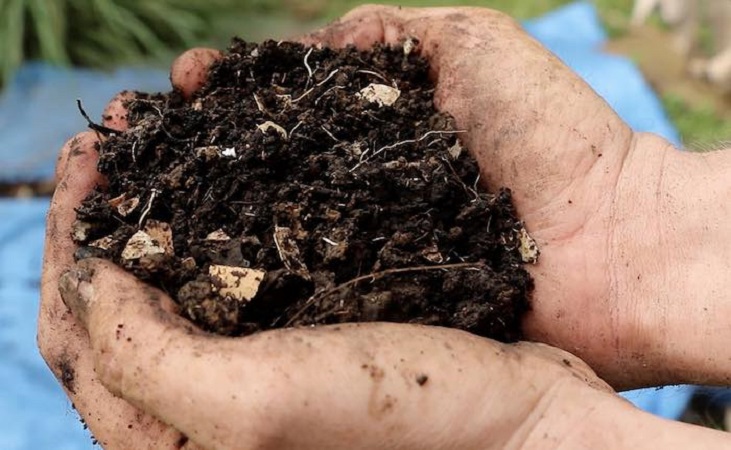
Feeding your soil
You lot are all very enlightened so you will already know the importance of feeding your soil rather than your plants. Bulk feeds like garden compost, seaweed or manure are key to a healthy, sustainable garden as they feed the beneficial life in the soil. The friendly soil life, including bacteria, amoeba and earthworms turn these bulky feeds into plant food while also building new soil. Direct plant feeds only benefit the plant, so they won't improve your soil for next year's or the next generation's vegetable crops.
Manure is a great soil feed, but while it will be perfect for your brassicas (cabbage family) it will cause your carrots to produce too much leaf and make them likely to fork. Good compost or well-rotted manure is a valuable (and sometimes expensive) addition to your garden so it makes sense to use it only where needed. A basic plan allows you to start preparing the soil now with an eye on the demands of each crop. You can view our range of soil improvers by clicking here.
Soil testing
Testing your soil allows you to be even more accurate with your feeding regime. There are two main things you should know: the pH of your soil and the concentrations of the major plant nutrients (nitrogen, phosphorous and potassium). You can get very accurate soil tests done professionally, but the basic garden test kits will give you a good idea of where you are and will be sufficient for most gardeners. The tests can either be done with a simple battery powered probe or a test tube soil test kit. View our
range of soil test kits at the link.
Testing the pH tells you if your soil is acid or alkaline. This will help you choose the crops which will grow best in your soil, or show you what you need to add to correct the balance.

PH & Moisture Meter
View ProductMost vegetables are happy with a pH of 6 - 7.5 (7 is neutral) but potatoes will be grow in a more acid soil (low pH). On the other hand it is better to grow cabbages in neutral to slightly alkaline conditions. It you have a pH issue it is more likely to be low than high, and it can be easily raised by adding ground limestone. A slightly high pH can be corrected by adding plenty of compost, or (if very alkaline) by adding granular sulphur.
Testing for nitrogen, phosphorous and potassium (N.P.K) gives you the levels of the three major nutrients needed for healthy plant growth, and allows you to top up as required.
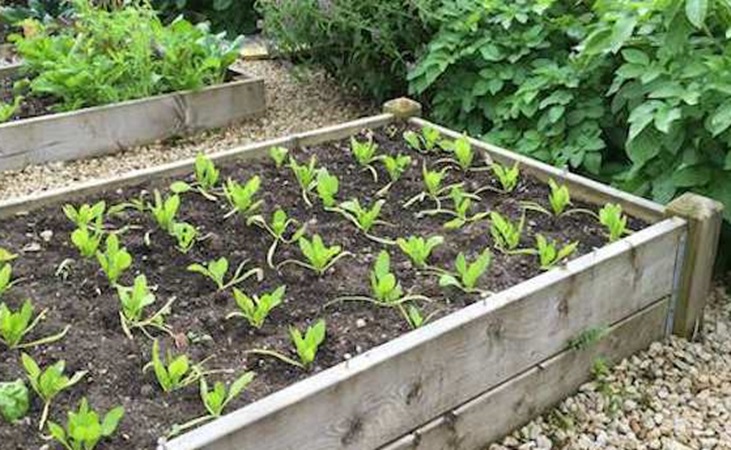
Succession Sowing & Follow on Crops
One of the problems with growing your own, if you could call it a problem, is having too much produce and not knowing what to do with it. Succession sowing is the answer. Sow smaller amounts over the season so you don't have masses of one particular crop ready at the same time. Instead of planting a full bed of lettuce, put in a few plants every 2 weeks to ensure a steady supply. Again planning is key here to make sure you have seedlings at hand and space to put them in.
Follow on crops allow you to use your space more efficiently by putting a new crop in after a harvest (provided there is still growing time). The photo above is one of my raised beds from last year after a new potato harvest. The bed is being pressed into service again to grow cool Autumn spinach which I had waiting in trays: giving me two harvests from a single bed.
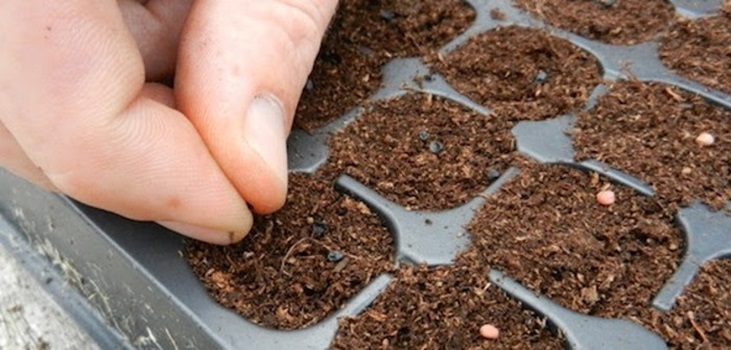
How we can help
At Quickcrop, we specialise in raised bed gardening and supply a very wide range of timber raised beds. We also supply any other components you might need: like the soil to fill them, organic plant feed or garden tools.
Vegetable Seeds
We also supply our own hand-picked range of vegetable seeds which have been chosen for their vigour and, crucially, for their suitability to the Irish climate. Our range may appear small in comparison to the big seed suppliers but they are the varieties that we grow in our own gardens and, as we always say, if they work for us, we are happy that they will work for you!



